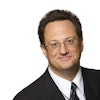 J.D. Foster
J.D. Foster
Former Senior Vice President, Economic Policy Division, and Former Chief Economist
Published
February 01, 2019

Much of January’s employment report data was distorted by the federal government shutdown. This was not true of the overall jobs gains data, however, which showed remarkably strong growth in employment. But the most important message in the January report was found in the revisions to December’s job gains, which were reduced from +312,000 to +222,000. The message to be drawn from such a substantial revision is to resist the temptation to make too much out of one month’s data.
Since late 2015, the Federal Reserve has steadily raised the federal funds rate from essentially zero to 2.5% in a steady progression toward a neutral policy stance. Meanwhile, the 10-year Treasury rate has varied between 2% and 3%, and currently stands at about 2.7%. A flat or inverted yield curve is a definite possibility. In years past, an inverted yield curve was a dark omen of recession. Fortunately, that is not the case today, despite the heavy hand-wringing underway in much of the commentariat.
Past episodes of an inverted yield curve typically started with a normal yield curve, with short-term rates well below long-term rates, inflation and inflation expectations reasonably contained, and the economy at or near full employment.
Then the Fed observed signs of rising inflation. As these signs persisted, the Fed raised the funds rate to resist these inflationary pressures. Financial markets, expecting the Fed to be successful in stifling inflation, might push up long-term rates, as well, but not nearly as much as short-term rates under the Fed’s actions. Hence an inverted yield curve resulted along with yet another Fed-induced recession.
Importantly, the inverted yield curve in these instances didn’t cause the recession. It was instead the harbinger of recession resulting from the Fed’s anti-inflation policy.
Now, consider the circumstances today. As the Fed has steadily raised short-term rates, long-term rates have responded little or not at all, hence the prospect of an inverted yield curve. However, no apparent inflationary pressures appear to be building in the economy. On the contrary, the inflation rate remains somewhat and persistently below the Fed’s 2% target. Likewise, inflation expectations remain well-anchored.
The Fed isn’t raising the funds rate to lean against the economy by pushing the rate well above neutral. The Fed believes it is still moving the funds rate toward neutral. Of course, no one knows for sure what the neutral rate is today but something around 3% seems to be the Fed’s best and a reasonable bet.
The Fed isn’t tightening monetary policy in the face of inflationary pressures. The Fed is removing monetary support because the economy no longer needs it. Hence even as the Fed raised the funds rate, the sky didn’t fall.
Many warned the Fed was moving too far, too fast, and could stymie the economy’s recent robust growth, returning us to the anemic growth to which we seemed condemned during the Obama administration. These commentators were wrong.
Instead, growth accelerated in 2017 and accelerated again in 2018 to around 3%. Why did the economy not slow in the face of the Fed’s actions? Because the Fed wasn’t tightening, it was removing support – essentially the difference between tapping the brakes and taking one’s foot off the accelerator.
The Fed is moving toward neutral. This still means the yield curve may invert, but unless the neutral rate is much lower than most, including the Fed, think, then the inversion will not arise because the Fed is tightening. If the yield curve inverts, it will be because global forces pressing down on long-term interest rates for over a decade now continue to do so.
Thus, the inverting yield curve can only be an omen of hard times ahead if low, long-term interest rates are a threat to economic growth. Many unusual economic theories have sprouted in recent years. Naming low interest rates as an immediate cause for slow growth would be a doozy.
About the authors

J.D. Foster
Dr. J.D. Foster is the former senior vice president, Economic Policy Division, and former chief economist at the U.S. Chamber of Commerce. He explores and explains developments in the U.S. and global economies.





